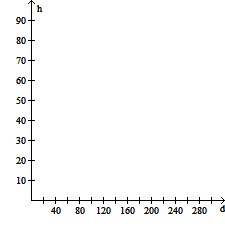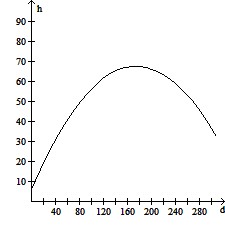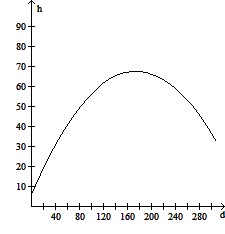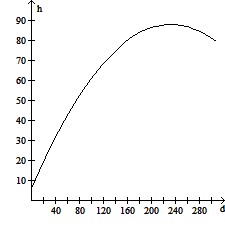Solve the problem.The Olympic flame at the 1992 Summer Olympics was lit by a flaming arrow. As the arrow moved d feet horizontally from the archer, assume that its height h, in feet, was approximated by the function  Sketch the graph of the function. Find the maximum height and the distance at which the maximum occurs.
Sketch the graph of the function. Find the maximum height and the distance at which the maximum occurs.
A. 
Maximum height is 61.25 ft;
occurs at a distance of 175 ft.
B. 
Maximum height is 67.55 ft;
occurs at a distance of 175 ft.
C. 
Maximum height is 80.2 ft;
occurs at a distance of 225 ft.
D. 
Maximum height is 55.6 ft;
occurs at a distance of 125 ft.
Answer: B
You might also like to view...
Determine the values of x for which the radical represents a real number.
A. -6 ? x ? -1, x > 4 B. x ? 0, 1 ? x ? 6 C. -6 ? x ? -1, 0 ? x < 4 D. -6 ? x ? -1, x ? 0
Solve the problem.The winning times (in seconds) in a speed-skating event for men can be represented by the expression  where x represents the year, with x = 0 corresponding to 1920. (For example in 1992, x would be
where x represents the year, with x = 0 corresponding to 1920. (For example in 1992, x would be  What would the winning time in 1982 be according to the model? Round your answer to the nearest hundredth.
What would the winning time in 1982 be according to the model? Round your answer to the nearest hundredth.
A. 42.49 sec B. 40.57 sec C. 41.53 sec D. 2878.29 sec
Find the part.81% of 491 meters
A. 3977.1 meters B. 39.77 meters C. 39,771 meters D. 397.71 meters
Evaluate the absolute value expression.4 + 5
+ 5
A. -26 B. -6 C. 26 D. 6